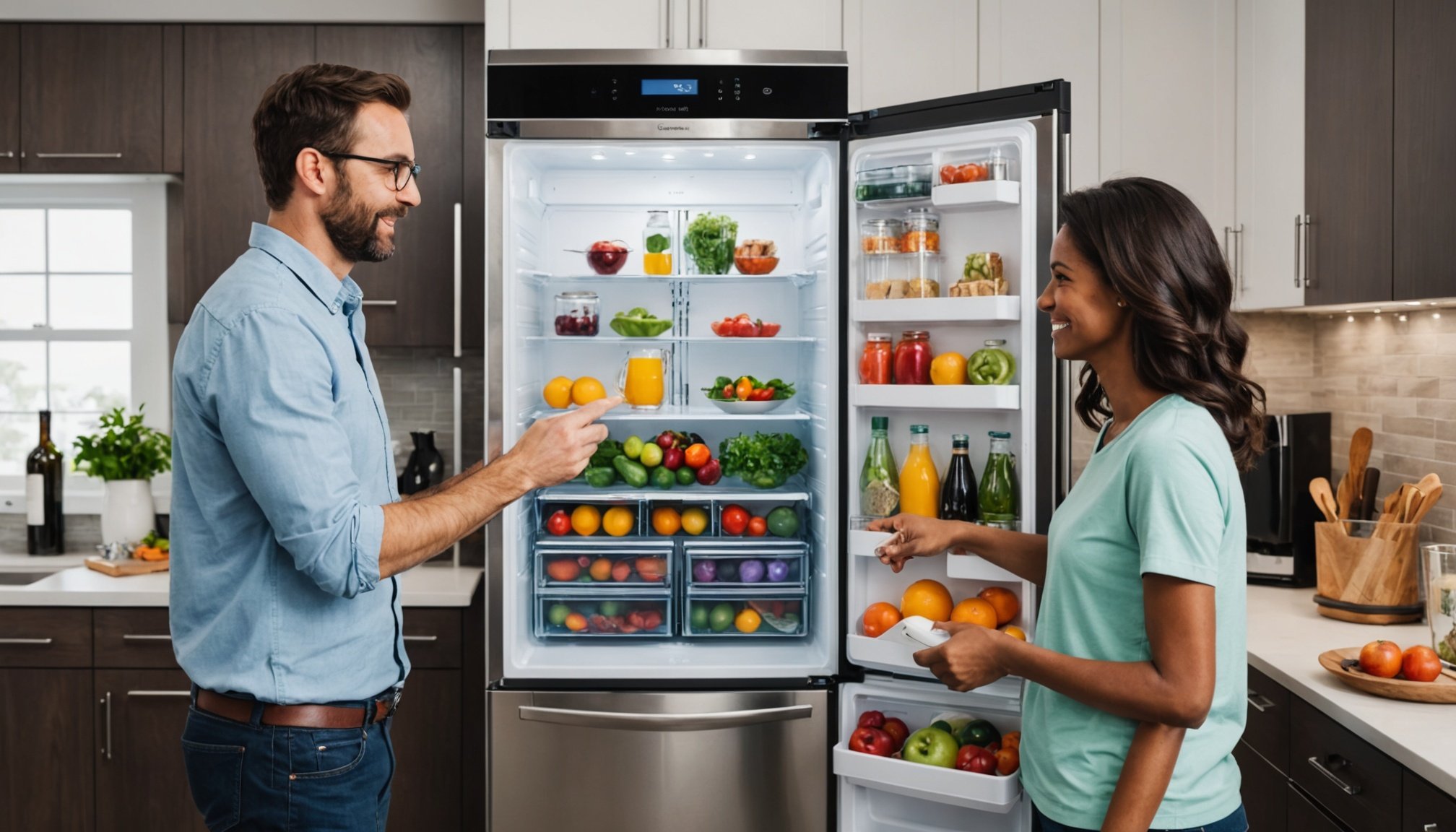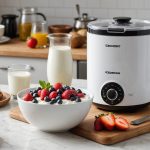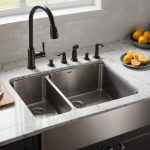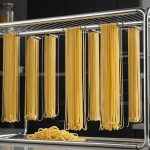Innovative Technology Features in Smart Refrigerators
Smart refrigerators have revolutionised kitchens with AI integration at the forefront. AI analyses usage patterns, predicting user behaviour to ensure efficiency. It helps in stock tracking and notifies users when groceries need replenishing, streamlining kitchen management. AI integration also includes recipe suggestions based on current ingredients, enhancing culinary creativity without extra trips to the store.
Smart sensors play a crucial role in food preservation. By monitoring the internal environment, these sensors adjust temperatures and humidity levels, extending the shelf life of perishables. They prevent spoilage and eliminate food waste, positively impacting both household expenditures and environmental footprint. The precision of smart sensors ensures optimal conditions, reducing the frequency of fridge cleanouts.
In the same genre : Your comprehensive handbook for selecting and maintaining eco-friendly quartz countertops
Moreover, the energy management features in smart refrigerators are pivotal. These features optimise the appliance’s energy consumption, adapting to periods of low usage and off-peak electricity rates. Consequently, this results in lower utility bills, a tangible benefit for eco-conscious households. Energy management contributes to sustainability efforts, supporting both personal finances and broader environmental goals.
In essence, smart refrigerators, with their seamless AI integration and advanced smart sensors, coupled with energy management capabilities, redefine modern living. These advancements not only enhance convenience but also promote sustainability and cost-effectiveness.
Also to see : Discover the best heat-resistant countertop materials for hot pots and pans: your comprehensive guide
Convenience Features for Modern Living
In modern appliances, touchscreen controls have transformed user interaction, offering sleek, user-friendly interfaces. These intuitive screens allow users to easily adjust settings and access various functionalities with a simple tap or swipe, enhancing the overall experience.
Remote monitoring brings a new level of convenience, especially in managing food storage. Users can monitor the status of their appliances, receive alerts about temperature changes, or when a door is left open. This feature ensures that food remains in optimal conditions, preventing spoilage even when one is away from home.
The incorporation of voice commands further simplifies operation. By integrating appliances with smart home systems, users can manage devices hands-free. Simple voice prompts can adjust settings, inquire about the appliance’s status, and even provide maintenance reminders. This not only makes life more convenient but also enhances efficiency in day-to-day operations.
By embracing these features, modern appliances not only provide ease of use but also maintain a seamless smart home integration. The combination of touchscreen controls, remote monitoring, and voice command capabilities ensures that users can operate their devices with minimal effort while maximizing functionality. These conveniences together represent a leap forward in technology, perfectly aligning with our fast-paced lifestyles.
Energy Efficiency and Sustainability
In the world of smart refrigerators, Energy Star ratings play a pivotal role. These ratings indicate compliance with energy efficiency standards set by the government, which means using less energy and reducing greenhouse gas emissions. An Energy Star-rated refrigerator consumes approximately 15% less energy than a standard model, offering a tangible benefit in utility cost savings and environmental impact.
Emphasizing sustainability, many smart refrigerators are crafted from eco-friendly materials. These materials not only reduce the carbon footprint during production but also improve the durability and longevity of the appliances. This innovation in design ensures that your refrigerator not only serves efficiently but also supports sustainable practices.
Sophisticated smart cooling technology further enhances energy efficiency by optimizing temperature based on usage patterns. For instance, the fridge can adjust its cooling intensity during peak and off-peak hours, minimizing unnecessary energy consumption. Smart sensors and artificial intelligence integration help maintain optimal conditions using the least amount of energy possible.
By considering Energy Star ratings and the incorporation of eco-friendly materials and advanced cooling technology, consumers can make informed decisions about smart refrigerators that are both economically and environmentally advantageous. This ensures a perfect balance of performance, savings, and sustainability in modern kitchens.
Connectivity and Smart Home Integration
In today’s fast-paced world, Wi-Fi capability is crucial for maximising the functionality of smart devices. It enables seamless customisation, allowing users to receive real-time notifications and updates, ensuring they’re always informed about their device’s status. This feature plays a pivotal role in providing prompt alerts, such as when maintenance is needed or a task is completed.
Harnessing app connectivity offers substantial benefits for managing devices remotely. Through dedicated applications, users can troubleshoot issues from anywhere, giving them control and peace of mind without physically interacting with the device. This flexibility enhances user convenience and encourages more efficient device management.
Moreover, home automation systems serve to further integrate these technologies into the smart home ecosystem. By ensuring compatibility, devices can synchronise with broader home setups, boosting overall smart home efficiency. It allows users to create schedules, automate routines, and connect different devices to work harmoniously together.
Some essential compatibility features to consider:
- Integration with popular systems like Amazon Alexa, Google Assistant, or Apple HomeKit
- Ability to schedule tasks in tandem with other smart home devices
- Consistent software updates for enhanced system performance
These capabilities align to create a connected environment that simplifies life and enhances home comfort.
Comparing Features Across Leading Brands
In the realm of modern refrigeration, brand comparisons offer a window into the various innovative features each major brand presents. When delving into consumer reviews, unique user experiences and preferences surface, providing critical insights for prospective buyers.
Feature Analysis
Leading brands like LG, Samsung, and Whirlpool are constantly competing to innovate. For example, LG’s Smart Technology integrates seamlessly with other smart home devices, while Samsung’s FlexZone drawer offers versatile temperature controls, and Whirlpool emphasizes energy efficiency. Feature analysis like this is key to selecting a fridge that fits one’s lifestyle.
Consumer Reviews
Turning to consumer reviews reveals deeper preferences. Many users praise LG for its reliability and modern aesthetics, while Samsung often garners accolades for its intuitive design and versatile features. Whirlpool is frequently lauded for its energy-saving capabilities, appealing to environmentally conscious consumers. Understanding these reviews helps tailor choices to personal priorities.
Recommendations
For buyers prioritising size and storage, opting for a Samsung model may prove beneficial due to its adaptable space solutions. Those focused on style might lean towards LG’s modern designs. Energy efficiency seekers could be drawn to Whirlpool’s eco-friendly models. Such recommendations allow consumers to align purchases with distinct technology requirements and specific needs.
Selecting the Right Smart Refrigerator for Your Needs
Understanding how to select the ideal smart refrigerator starts with a thorough individual needs assessment. This involves examining the features you require based on your lifestyle. Do you need integrated cameras or energy-efficient models? Consider how often you cook and shop, as this can influence the size and type of compartments you’ll need.
Next, budget considerations play a critical role. Prices can skyrocket with advanced technology integration, so determining how much you are willing to spend is essential. Remember, innovation and added functionalities often lead to higher costs. A smart balance between desired features and budget constraints can ensure you get the best value.
Finally, focus on key aspects such as energy efficiency, connectivity with other smart home devices, and ease of use. These factors shouldn’t be overlooked while completing your buying guide. Consider the design and storage space that fits your kitchen layout and lifestyle seamlessly.
Essential Takeaways
- Evaluate personal needs to avoid unnecessary features.
- Budget carefully to manage the higher costs of advanced technology.
- Keep energy efficiency and connectivity in mind for a long-term investment.
Understanding these elements can guide you towards making a well-informed decision that aligns with both your lifestyle and financial limits.











